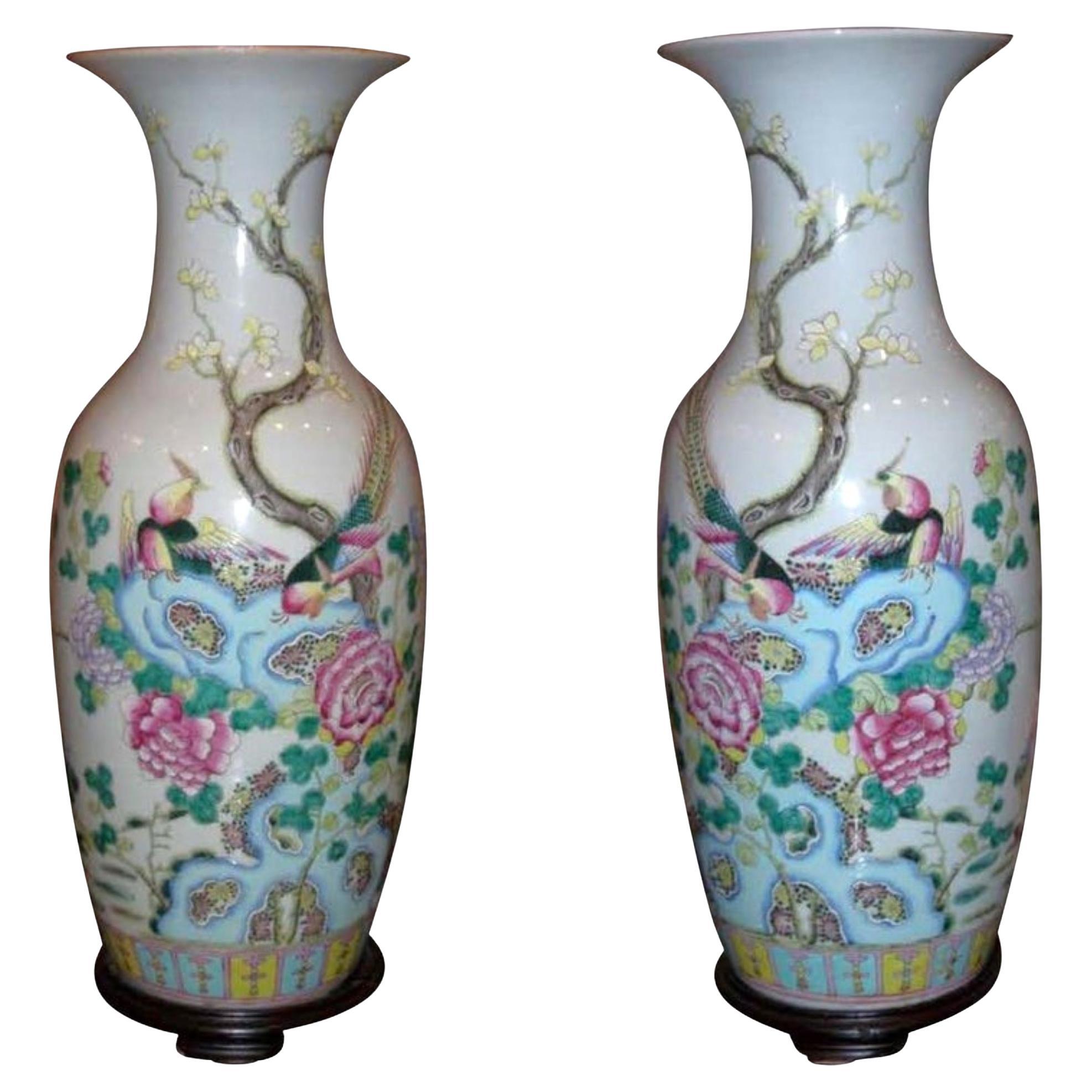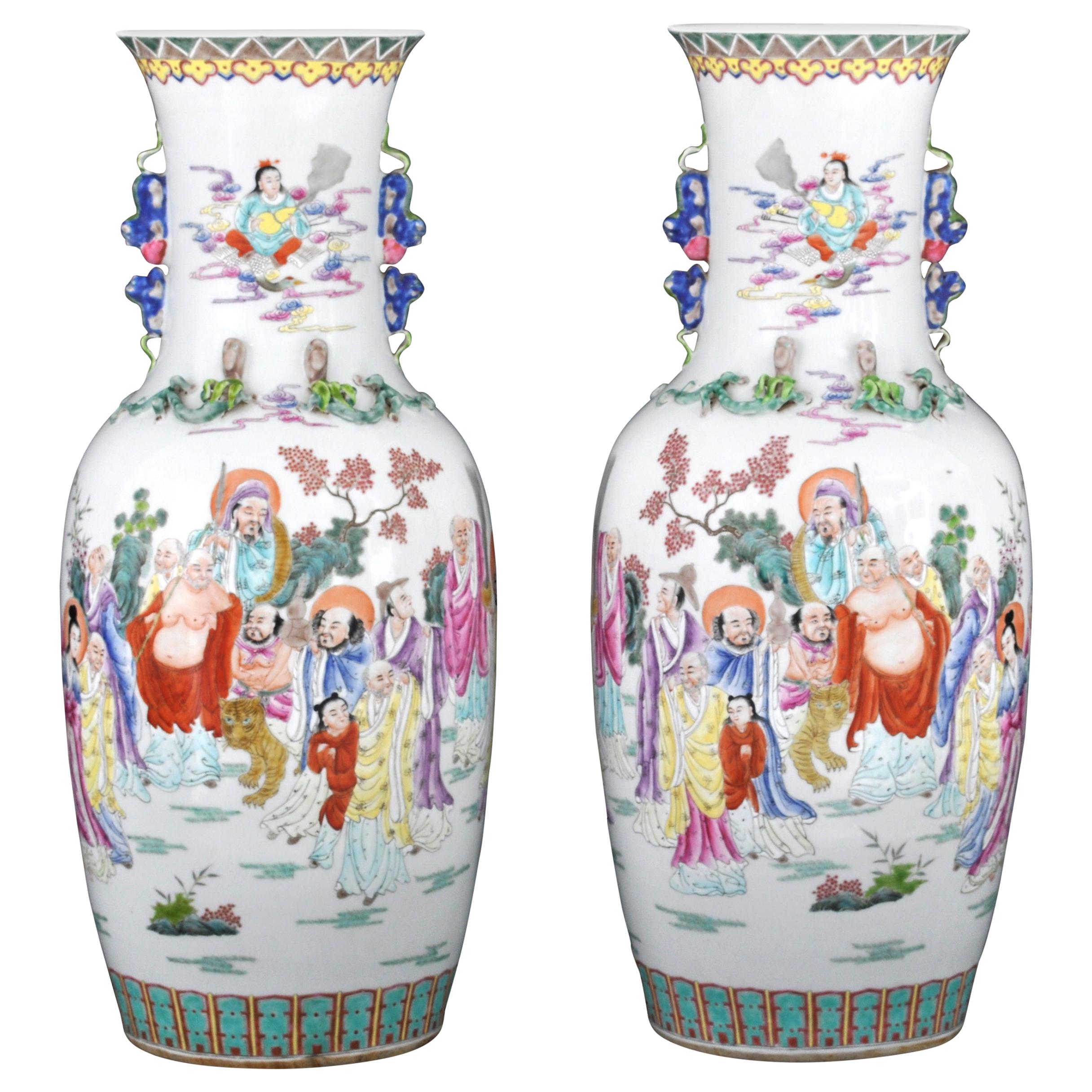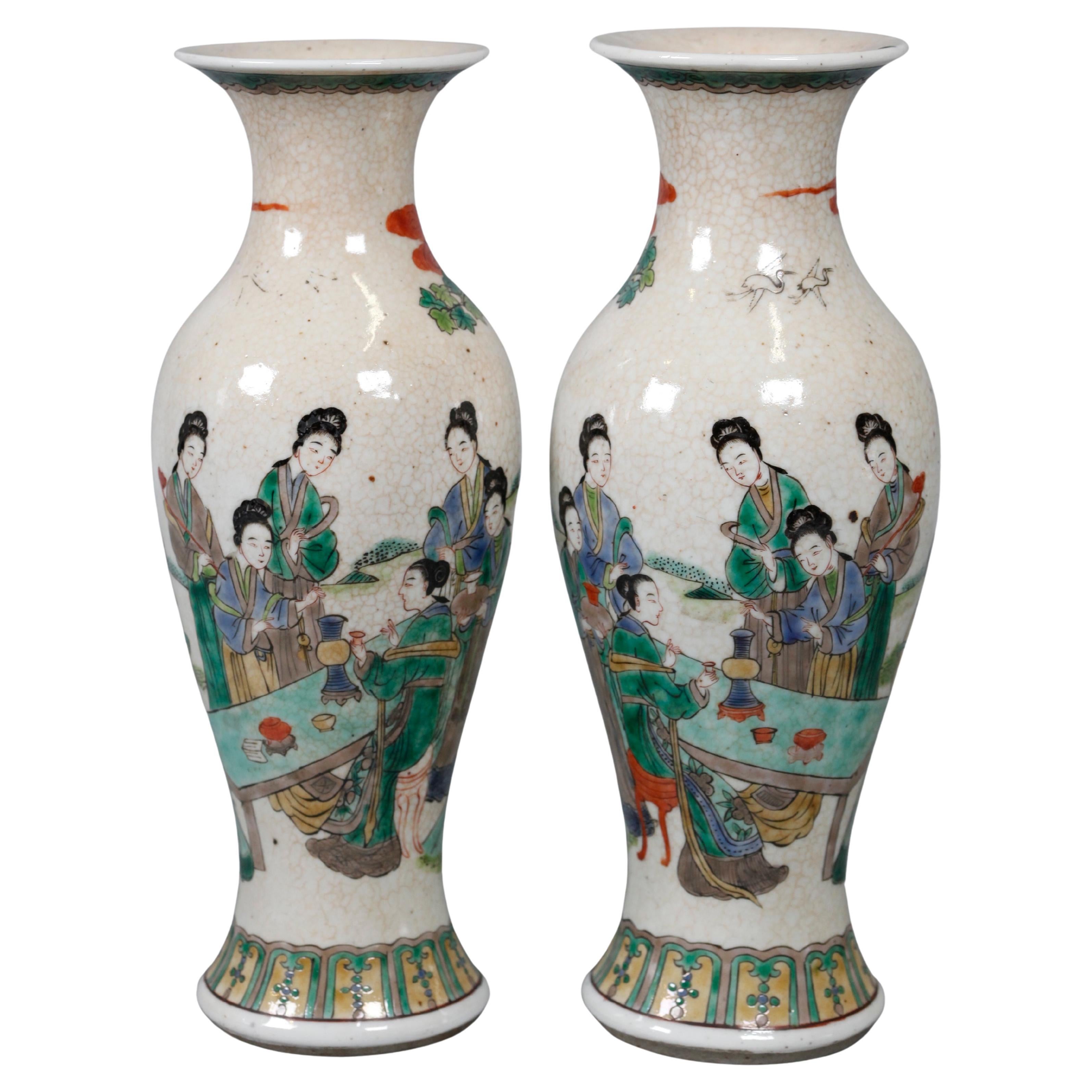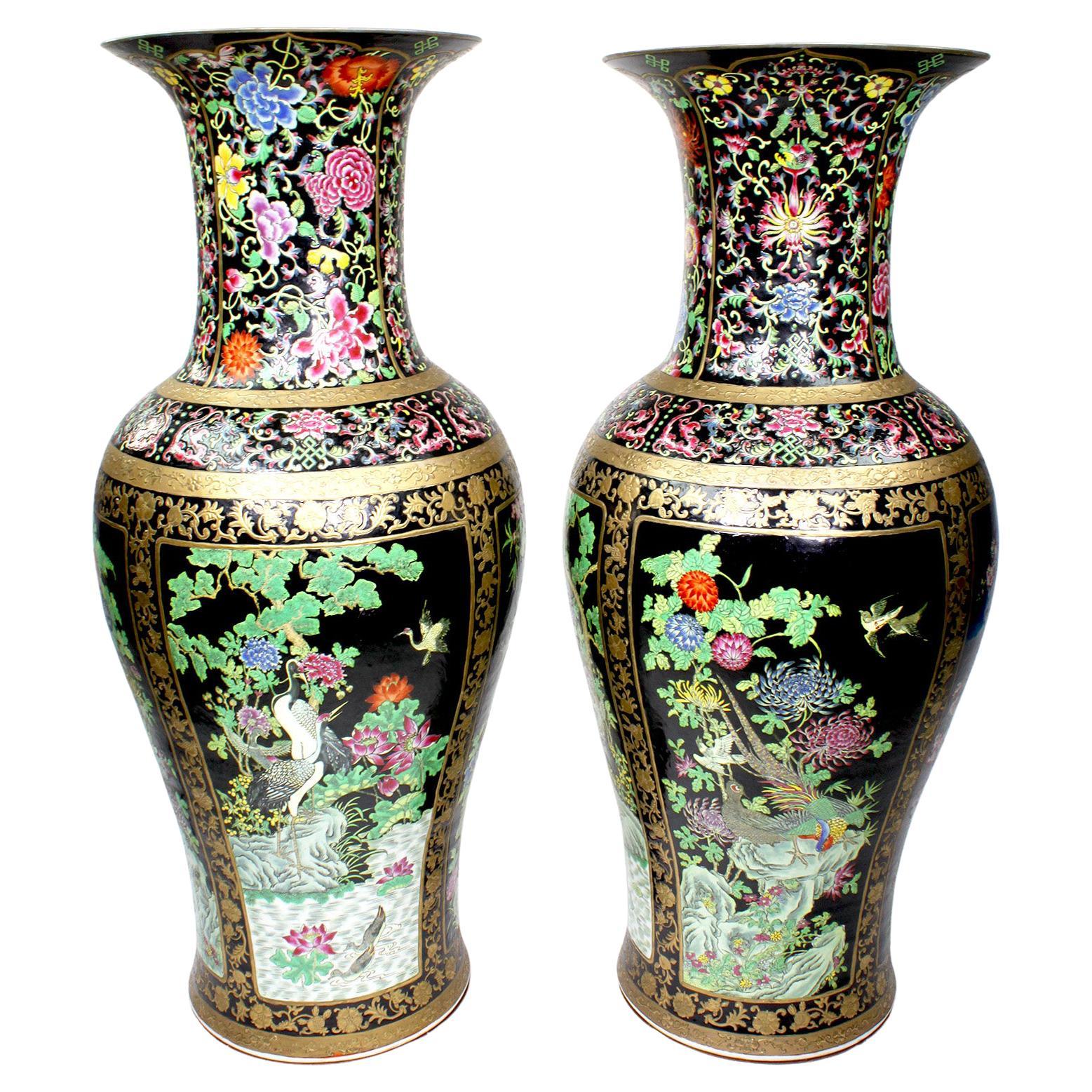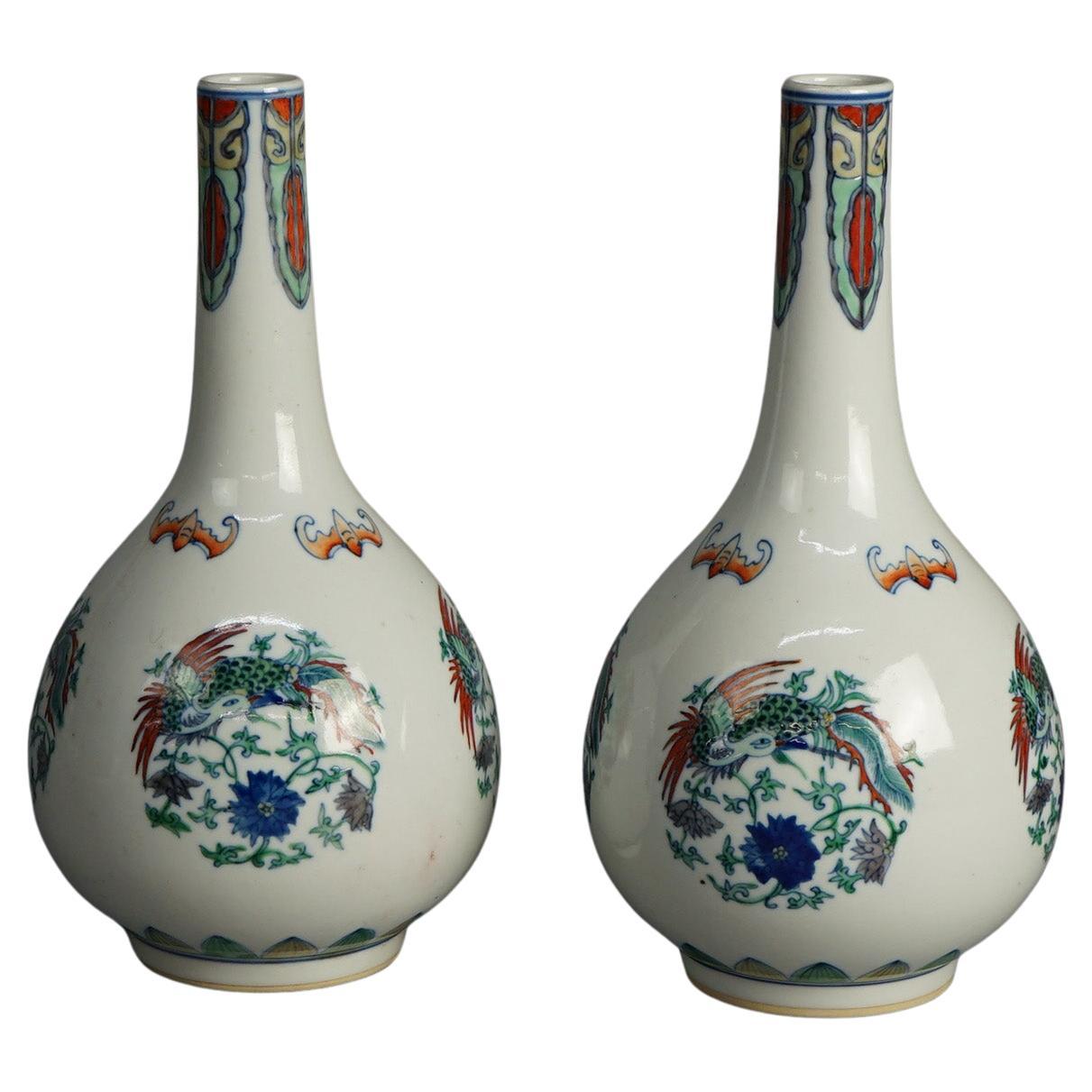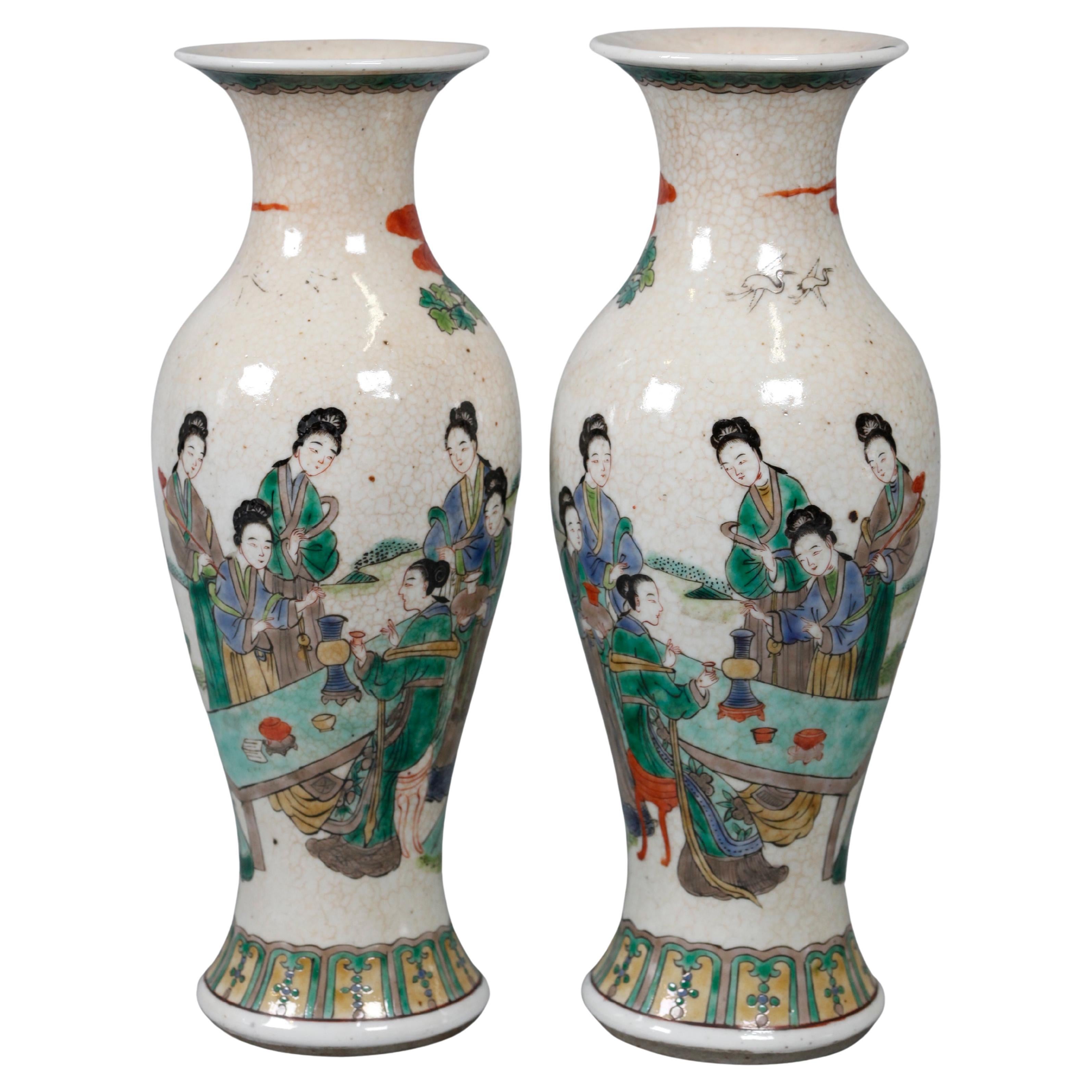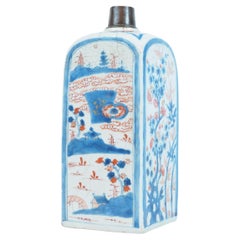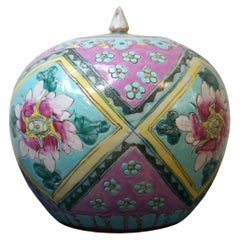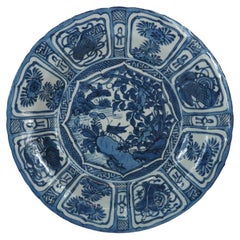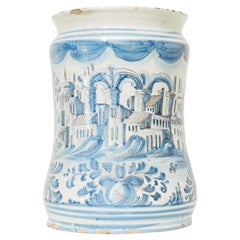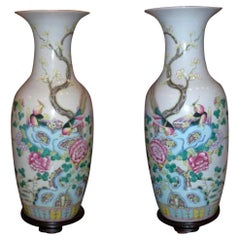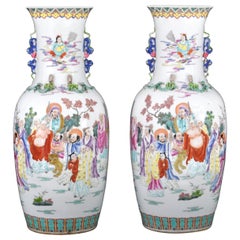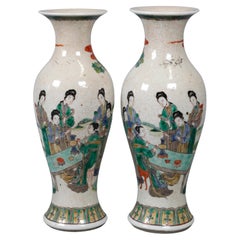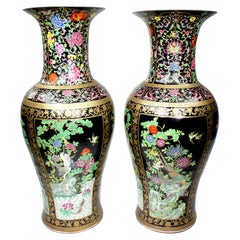Items Similar to Pair of Monumental Chinese porcelain fam. rose Qing Dynasty Bird Vases, 60.6 in.
Want more images or videos?
Request additional images or videos from the seller
1 of 21
Pair of Monumental Chinese porcelain fam. rose Qing Dynasty Bird Vases, 60.6 in.
$58,259.61per set
£43,938.41per set
€50,000per set
CA$80,548.98per set
A$90,228.41per set
CHF 47,391.22per set
MX$1,097,148.49per set
NOK 600,127.62per set
SEK 569,682.49per set
DKK 380,632.72per set
About the Item
Pair of Colossal Qing Dynasty Bird Vases: An extremely rare pair of Chinese porcelain famille rose vases decorated with phoenix birds and numerous birds in foliage.
High 154 cm. Perfect condition. Largest diameter 55 cm. Diameter at the rim 44 cm.
Provenance: Private collection of a shipping tycoon in Belgium.
Museum quality pieces. Circa 1900.
- Dimensions:Height: 60.63 in (154 cm)Width: 21.66 in (55 cm)Depth: 21.66 in (55 cm)
- Sold As:Set of 2
- Materials and Techniques:
- Place of Origin:
- Period:
- Date of Manufacture:Unknown
- Condition:Wear consistent with age and use.
- Seller Location:Gorssel, NL
- Reference Number:1stDibs: LU8869244972032
About the Seller
5.0
Vetted Professional Seller
Every seller passes strict standards for authenticity and reliability
1stDibs seller since 2023
- ShippingRetrieving quote...Shipping from: Gorssel, Netherlands
- Return Policy
Authenticity Guarantee
In the unlikely event there’s an issue with an item’s authenticity, contact us within 1 year for a full refund. DetailsMoney-Back Guarantee
If your item is not as described, is damaged in transit, or does not arrive, contact us within 7 days for a full refund. Details24-Hour Cancellation
You have a 24-hour grace period in which to reconsider your purchase, with no questions asked.Vetted Professional Sellers
Our world-class sellers must adhere to strict standards for service and quality, maintaining the integrity of our listings.Price-Match Guarantee
If you find that a seller listed the same item for a lower price elsewhere, we’ll match it.Trusted Global Delivery
Our best-in-class carrier network provides specialized shipping options worldwide, including custom delivery.More From This Seller
View AllChinese Imari square-sided bottle vase, Kangxi period (1662-1722)
Located in Gorssel, GE
Chinese Imari square-sided bottle vase, Kangxi period (1662-1722), decorated in blue and rouge de fer with river landscapes, floral decor and bamboo.
High: 25 cm.
Condition: some h...
Category
Antique Late 17th Century Chinese Ceramics
Materials
Porcelain
Chinese Antique porcelain ginger jar, South-East Asia, Guangxu 1900
Located in Gorssel, GE
Chinese porcelain ginger jar with floral decorations in bright and vibrant colours, made for the South-East Asian market.
Made around 1900.
Dimensions: 25 x 22 x 22 cm.
Overall in good condition, some minor damage to the glaze and some minor frittings to the unglazed parts of the lid.
Possibly Peranakan or Straits Chinese ware...
Category
Antique 1890s Chinese Ceramics
Materials
Porcelain
Chinese Kraak Porcelain Dish – Ming Dynasty, Wanli Period, Diameter: 36.5 cm.
Located in Gorssel, GE
Chinese Kraak Porcelain Dish – Ming Dynasty, Wanli Period (c. 1573–1619)
Diameter: 36.5 cm Condition: Professionally restored
Fine blue and white kraak porcelain dish from the Wanl...
Category
Antique Early 17th Century Chinese Ceramics
Materials
Porcelain
Large Italian Albarello, 18th Century
Located in Gorssel, GE
Large Italian Albarello, 18th Century
An impressive 18th-century Italian albarello, notable for its size and the finely painted continuous cityscape in cobalt and manganese tones. O...
Category
Antique 18th Century Italian Delft and Faience
Materials
Faience
Rare elaborately decorated Jogja tea service, 800/1000, workshop Moeljodihardjo
Located in Gorssel, GE
Rare elaborately decorated Jogja tea service with unusual decoration of boddhisatva, taotie masks, birds and pagoda-shaped lids. The tea service contains a teapot, coffeepot, sugarbo...
Category
20th Century Tea Sets
Materials
Silver
Large handcarved Asian wooden sculpture of a water buffalo with calf and figures
Located in Gorssel, GE
Large hand carved Asian wooden sculpture of a water buffalo with calf and four figures on top.
One of the figures is playing a flute (flute mi...
Category
Early 20th Century Chinese Sculptures and Carvings
Materials
Wood
You May Also Like
Pair 20th C. of Guangxu period Chinese Porcelain Vases Decorative Object CA LA
Located in West Hollywood, CA
Pair of Guangxu period, early 20th century (1900-1910), Chinese Porcelain Vases Decorative Object CA LA. Very beautiful and detailed pair of Chinese Porcelain vases circa early 19th ...
Category
Early 20th Century Chinese Vases
Materials
Porcelain, Paint
$8,000 Sale Price / set
24% Off
Monumental Pair Antique Chinese Qing Dynasty Famille Rose Porcelain Vases 1900
Located in Portland, OR
A fine pair of Monumental antique Chinese late Qing dynasty period Famille Rose Porcelain vases.
The vases of baluster form with applied handles modeled as dragons, each vase is very finely a hand-painted with polychrome scenes of immortal figures in a garden setting. Each vase having a red Qianlong six character mark to the base. Excellent condition, no damage or retoration.
This monumental pair of antique...
Category
Antique Early 1900s Chinese Qing Ceramics
Materials
Porcelain
$3,840 Sale Price / set
20% Off
Pair of Chinese Porcelain Vases, 19th c.
Located in New York, NY
decorated with a multicolor figural scene
Category
Antique Mid-19th Century Chinese Antiquities
Materials
Porcelain
$1,500 / set
A Pair of Tall Chinese Export Porcelain Figural Vases with Birds and Flowers
Located in Los Angeles, CA
A Pair of Tall Chinese export porcelain figural vases. The ovoid porcelain bodies decorated with colorful flowers, tropical birds, tree...
Category
Late 20th Century Chinese Chinese Export Porcelain
Materials
Porcelain
Pair of Chinese Doucai Porcelain Vases with Kangxi Mark & Pheasants 20thC
Located in Big Flats, NY
Pair of Chinese Doucai Porcelain Vases with Kangxi Mark & Pheasants 20thC
Measures - 11"h x 5 1/2"w x 5 1/2"d
Category
20th Century Asian Ceramics
Materials
Porcelain
$1,440 Sale Price / set
20% Off
Pair of Chinese Porcelain Vases, 19th Century
Located in New York, NY
decorated with a multicolor figural scene
Category
Antique Mid-19th Century Chinese Antiquities
Materials
Porcelain
$2,000 / set
More Ways To Browse
Antique Bird Vase
Antique Rose Vase
Monumental Ceramics
Phoenix Bird
Famille Rose Vase
Asian Vase With Birds
Porcelain Belgium
Rare Antique Asian Vases
Monumental Vases Pair
Phoenix Chinese Vase
Pair Of Chinese Rose Famille Vases
Qing Dynasty Vase Pair
Pair Of Chinese Qing Dynasty Vases
Qing Dynasty Famille Rose Vase
Chinese Porcelain Phoenix Bird
Famille Rose Phoenix
Antique Chinese Porcelain Clouds
Chinese Lotus Blue White
